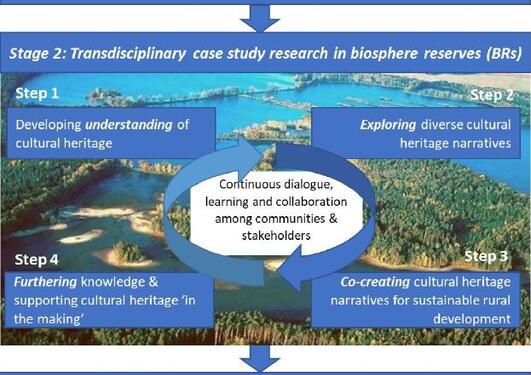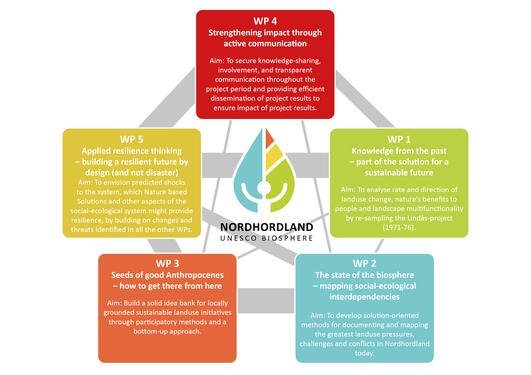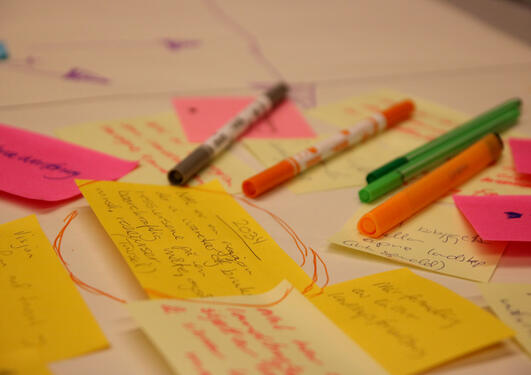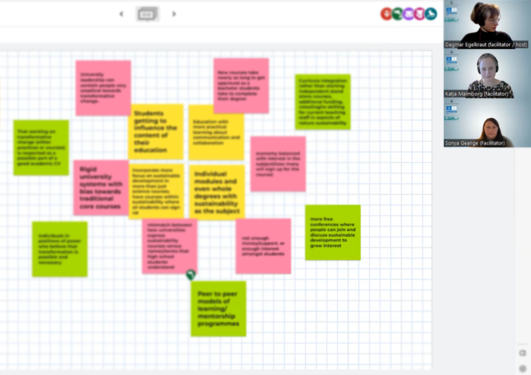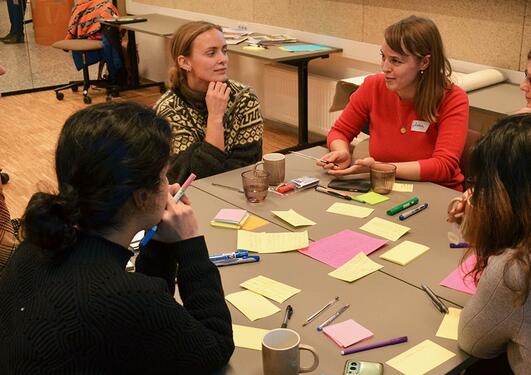High school students' visions for Nordhordland in 2054
This spring, the UNESCO Chair group has been working with collecting positive future visions for sustainable nature, land-use and cultural landscapes. Most recently, workshops were held with students from two different high schools in Nordhordland biosphere reserve.

Hovedinnhold
In April, members of the UNESCO Chair group and Nordhordland UNESCO biosphere reserve visited Austrheim high school, to lead a day focused on sustainability and cultural landscapes in the past and in the future. There were about 20 students aged 15-16 participating. First, they were introduced to the fact that they live in a UNESCO biosphere reserve, and what it is and what it means. Further, UNESCO Chair professor Inger Måren and postdoc Katja Malmborg taught them about ecosystem services – or natures benefits to people - focusing on the coastal heathlands, which is the traditional cultural landscapes in this part of the biosphere region.
After the introduction in the classroom, the teaching was moved outside and into the heathlands. Here, the students were divided into smaller groups, and each group was assigned an ecosystem category – supporting, regulating, provisioning or cultural. Using a methodology developed by the UN Association of Norway in collaboration with Nordhordland BR, the students registered and assessed different ecosystem services present in the landscape, and how those may have been affected by humans.
Following the evaluation of ecosystem services outdoors, the students were brought back inside, and it was time to look forward. Using the Seeds of Good Anthropocenes methodology (as was also done with adults in January), the students worked in groups together with a facilitator, creating a common positive vision for the year 2054. Further, they identified positive seeds; existing initiatives, projects, organisations, etc., that could help reach their future vision. By the help of the facilitator, seeds where then clustered into different categories, and by focusing on one seed-cluster at the time, the students thought of and came with suggestion to which stakeholders are important for the seeds in question, and potential barriers and enablers.

Example of output from the Seeds of Good Anthropocenes workshop with Knarvik high school.
This same procedure was repeated in May with first-year students of Knarvik high school – only this time there were about 80 students. To accommodate so many students, this day was hosted at the Heathland Centre at Lygra.
It will be very interesting to compare the workshop results of the two schools with each other, but also comparing the youth’s visions with those of the adults. These results will be used both in the CULTIVATE and BIOSPHERE projects.

Students investigating ecosystem services at the seashore.
